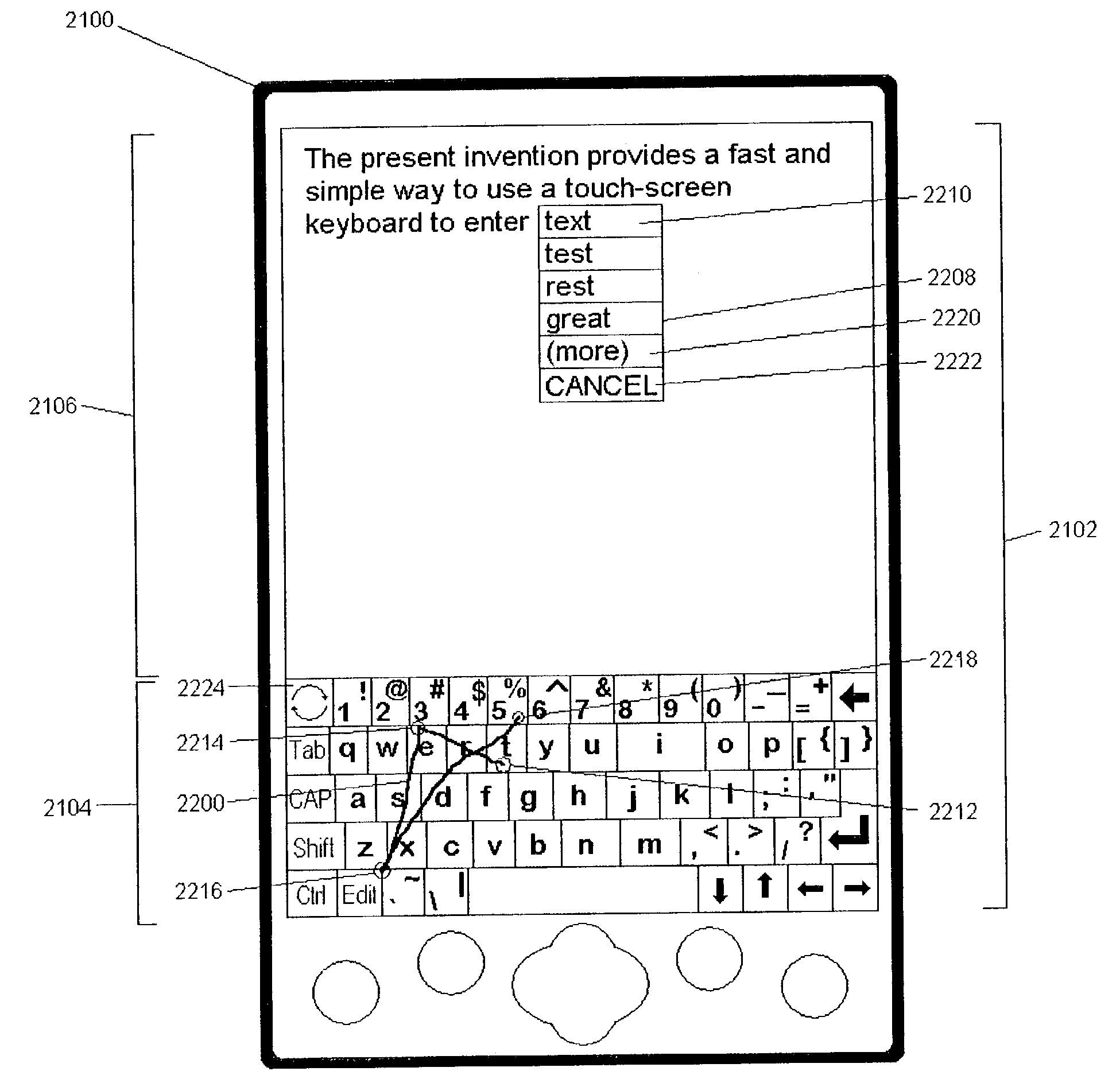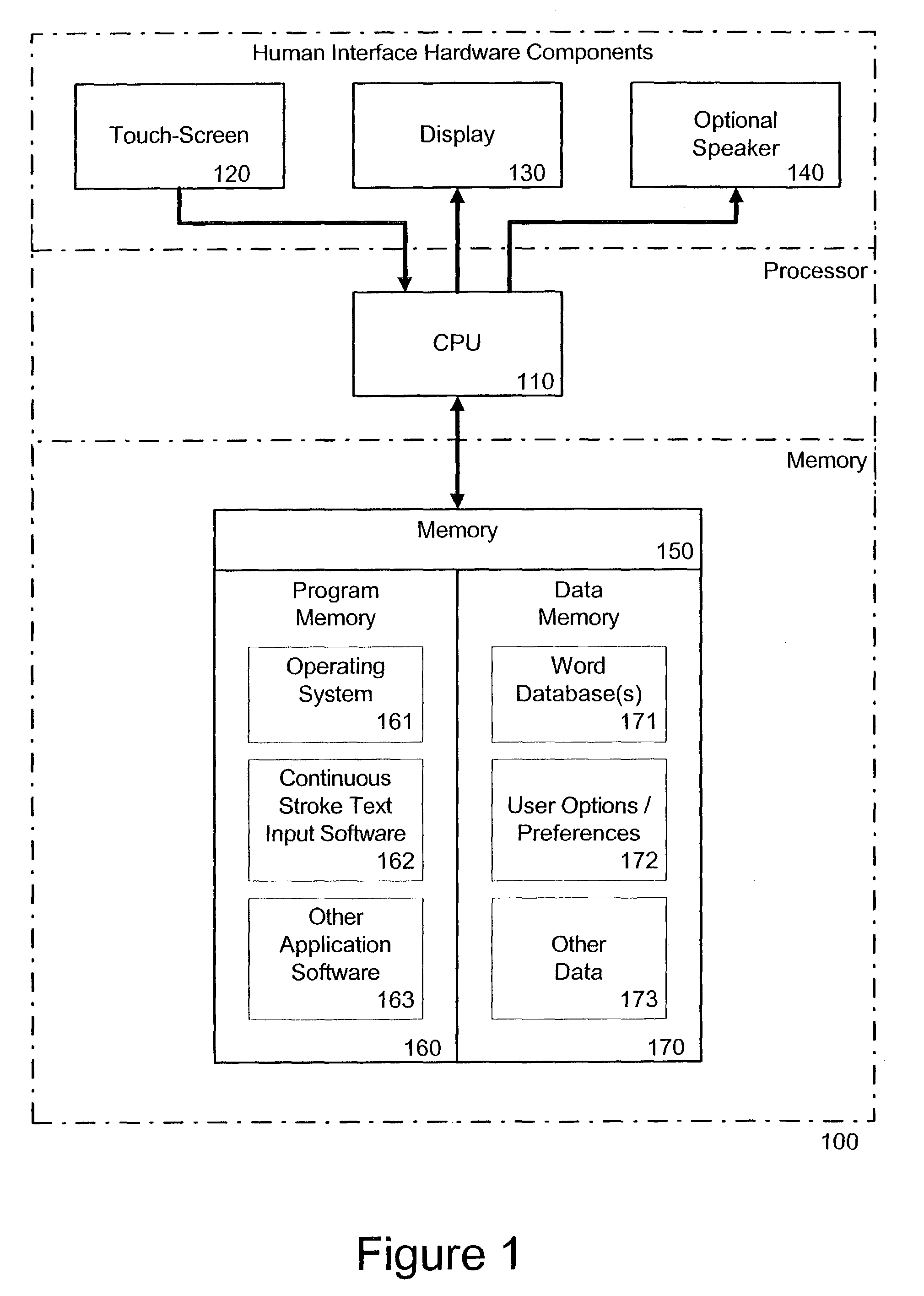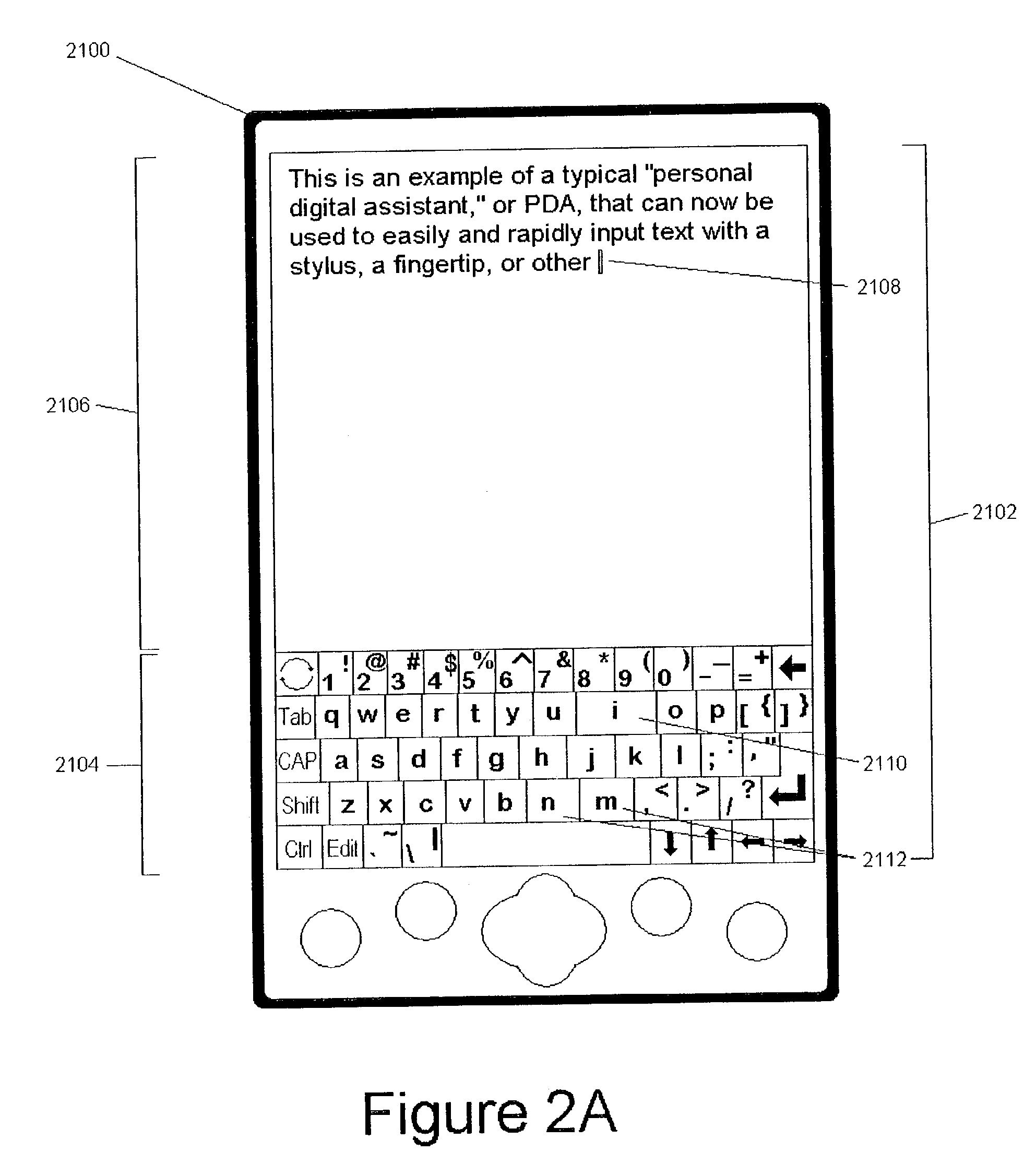With ongoing efforts to make computers smaller and more portable, the physical keyboard has become one of the most significant limiting factors in just how small a device can become: the physical size of the human finger is not something computer designers could change.
Unfortunately, as the space taken up for input on the display screen is decreased, it becomes difficult to increase speed without adversely affecting accuracy.
To date, pen-based computing has not replaced conventional portable
laptop computers as was originally forecast, for the simple reason that text input on pen-based computers is too slow.
This results in the need to always lift and set down the
stylus, slowing input.
Each letter requires several strokes of the
stylus, making it very inefficient.
Further, with varying
handwriting styles, accuracy of this
software is still below user-acceptance levels (see MacKenzie, I. S., & Chang, L.
As mentioned above, the reliance on the use of “
digital ink” by even the “latest and greatest” of computer touch-screen technology, the
Tablet PC, provides clear evidence that
handwriting recognition is still not good enough to satisfy most users.
Furthermore, even if a completely accurate method of
handwriting recognition were available, handwriting itself is simply too slow and tiring (especially on a touch-screen) to provide a satisfactory
input method.
Disadvantages of this method are it requires the user to learn a new writing method and still requires the
stylus to be set-down and lifted once for each individual character (thus slowing
text entry).
Second, and more importantly, they are slow because the user is forced to tap one letter at a time—effectively reducing the user to input text in a way that is analogous to single finger
typing on a regular physical keyboard.
Furthermore, this approach requires the user to a very unfamiliar
keyboard layout in which completely unrelated letters are grouped together on a single key.
Even when letters are grouped according to an “alphabetic”
layout (as on the keys of
cellular telephone), compared to the standard “QWERTY” keyboard, the arrangement is unfamiliar for the majority of individuals and further slows the
text entry process.
However, the user is still required to tap once for each desired letter, and is further required to move the point of contact in a particular direction before lifting the stylus and breaking contact with the screen.
The large number of different (and constantly changing) partial keyboards would tend to make this a slow and frustrating
input method for the majority of users.
However, the nature of the feedback provided to the user and the consequent need to observe the result of each keystroke and correct it before moving on to the next keystroke, creates a system that generally would slow the rate of text input considerably.
However, the method described by Niemeier has several significant drawbacks.
One is that the
user needs to either memorize 26 new “temporary” sub-keyboards that appear when each of the 26 letter keys are contacted (creating a significant
learning curve in order to use the system effectively), or else the
user needs to pause to observe whether and where the next desired key may have appeared on a temporary key, which would likely negate any speed
advantage that the “tap and slide” method would provide.
Furthermore, as described above, the system is limited to sliding to at most one additional key beyond the initially selected key, unless the subsequent letter also happens to appear on a key adjacent to the selected temporary key.
Furthermore, since the temporary keys are only displayed while the stylus (or finger) is actually in contact with the screen, a significant number of the keys which might be displayed would likely be partially or totally obscured by the stylus and hand of the user.
While this approach is easier to learn than Niemeier's (since only the four vowels and their associated directions must be learned), and it is not affected by potential visual interference by the user's hand (since no temporary keys are actually displayed), it is limited to only being able to add one of the four particular letters following a key selection, and thus does not offer a very significant improvement over a standard keyboard.
This method allows for a smaller keyboard, but requires multiple strokes per letter which dramatically reduces the speed of
text entry.
The
disadvantage of this method is it requires the user to learn a new
keyboard layout, and again, the user is still required to lift the stylus between each key activation, essentially reducing the user to a one-finger typist.
Each of the above methods has the potential to speed text entry by some degree and / or decrease the amount of on-screen real estate required for input.
However, text entry via existing on-screen keyboards and
handwriting recognition techniques are still generally slower than using a physical keyboard.
Handwriting itself is simply too slow, and the recognition accuracy is still not up to acceptable standards.
The fundamental problem is that, particularly for devices that must utilize touch-screen keyboards that are reduced in size, the additional actions of lifting the stylus and bringing it back into contact with the screen in a controlled manner considerably slow down the input process.
Other methods which have been proposed to reduce the number of times the stylus must be lifted from the screen (such as Niemeier and Perlin) still fail to provide a method that can significantly speed text entry.
Niemeier's proposed system adds too much complexity by requiring the user to react to a constantly changing
keyboard layout, and limits the number of characters that can be selected following an initial character selection.
Perlin's approach fails because it requires the user to execute too many distinct stylus movements to enter each letter.
 Login to View More
Login to View More  Login to View More
Login to View More 


